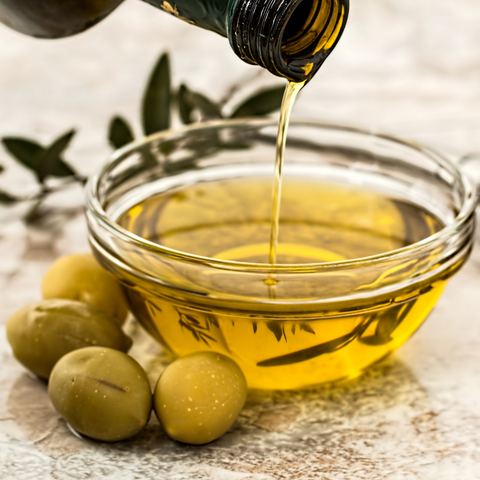Improve Food Health Quality with Healthy Frying Oil

When it comes to fried food, “healthy” is probably the last word that comes to mind. The high fat content that comes from frying food in oil has typically been frowned upon by nutritionists, dietitians, and doctors alike. However, not all oil is created equal, and research shows that it’s not just the fat content that makes fried food inherently unhealthy, it’s what happens during the cooking process that has much more detrimental effects. Take a look at these healthy frying oil alternatives as well our proven way to make frying oil safer to consume.
Download the Ultimate Guide to Restaurant “Sur-Thrival” in 2021!
Choose the Right Healthy Frying Oil
Choosing the right healthy frying oil alternative matters when it comes to serving quality food. The oil needs to be stable enough to withstand the ideal deep-frying temperature of around 350–375°F (176–190°C). If the temperature of the oil is too low, food becomes greasy – too high and it can dry out the food and oxidize the oil. A healthy frying oil will have a high smoke point and be stable enough to not react with oxygen when heated.
Oils with a high amount of saturated fats have a tendency to be more stable when heated, so oils with mostly saturated and monounsaturated are good for frying.
The Best: Saturated Fats
Saturated fat doesn’t have the best street-cred when it comes to health. However, many studies conclude that saturated fats don’t increase the risk of heart disease. With this in mind, the healthiest and best oils to use for deep frying are:
-
Coconut oil – after a full 8 hours of continuous deep frying at 365°F (180°C), the quality of coconut oil remains intact. Because 90% of the fatty acids in coconut oil are saturated, it’s resistant to heat, making it a great choice for deep frying. Just make sure it’s non-hydrogenated.
-
Animal fat such as lard, tallow, or ghee – grass-fed animal fats add tons of flavor and crispness to fried food and have a magical ability to resist damage when fried. Steer clear of regular butter, however. It contains small amounts of carbs and protein that burn when heated
-
Olive oil – as one of the healthiest fats, it’s resistant to heat because it is high in monounsaturated fatty acids. Restaurants tend to shy away from olive oil because it’s considered to have a low smoking point compared to other oils, but its smoking point is between 374–405°F (190–207°C), which fits into the ideal temperature of 350–375°F (176–190°C) for deep frying.
-
Avocado oil – it contains mainly monounsaturated with some saturated and polyunsaturated fats mixed in. Refined avocado oil has a high smoke point of 520°F (270°C). Just be mindful of its slightly nutty taste that could alter the flavor of the fried foods.
-
Peanut oil – it has a high smoke point of about 446°F (230°C). It’s popular for deep frying because it has a neutral taste, but since it contains around 32% polyunsaturated fats, it may not be as healthy as some other choices. This relatively high amount makes it vulnerable to oxidative damage at high temperatures.
Methods of Determining When to Change Your Cooking Oil
The Rest: Polyunsaturated Fats
Oils that contain a lot of polyunsaturated fats are less suitable for frying because they contain two or more double bonds in their chemical structure. This can react with oxygen and form harmful compounds when exposed to high heat, so some fats and oils aren’t advisable for deep frying. These include vegetable oils that are high in polyunsaturated fatty acids, such as:
-
cottonseed oil
-
canola oil
-
safflower oil
-
grapeseed oil
-
corn oil
-
sunflower oil
-
rice bran oil
-
sesame oil
-
soybean oil
These oils are best used cold, because when heated, they can result in large amounts of oxidized fatty acids and harmful compounds.
Filtering out the Health Risks
All oils can become toxic if they’re reused numerous times without proper filtration. In these situations, the oil:
-
Becomes carcinogenic, meaning it has the possibility of causing cancer
-
Produces toxic elements called aldehydes
-
Increases free radicals in the body which causes inflammation
-
Inflammation is the root cause of most diseases including obesity, heart disease and diabetes
-
Inflammation in the body can also reduce immunity and make people prone to infections
-
-
Can increase levels of LDL or bad cholesterol in the body, which can increase risks of heart disease, stroke and chest pain
-
Becomes more acidic, increasing the likelihood of acid reflux
Remove Invisible Impurities for Healthier Oil
The best way to improve the health and safety of cooking oil is proper purification of these harmful properties. There are many different ways to do this – options range from costly equipment to manual filtration using filter paper or bags – but the most cost-effective, environmentally friendly, and efficient way to purify cooking oil, is with FreshFry Pods. The Pod works overnight by capturing and removing the health-risk impurities that make oil smoke, look dark, and taste bitter. As a bonus, our Pods are 100% plant-based and environmentally friendly. They also help you save the money you’ve invested in your expensive cooking oil by extending its life and quality. This is especially advantageous now that oil costs are on the rise.
While fried food will likely never be considered “healthy,” there are steps that restaurants can take to improve the health quality of these delicious and indulgent foods. Intentionally choose the right healthy frying oil for your business and filter it nightly with FreshFry Pods to ensure that every food item cooked will be at the highest quality it can be.





